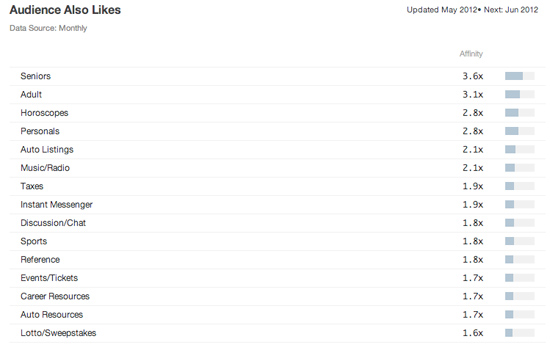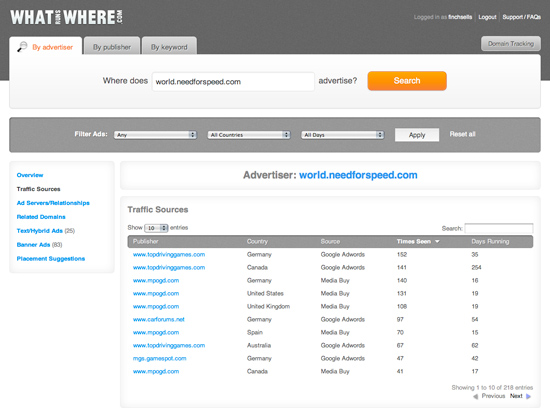4 Processes That Make Money for Affiliate Marketers
If you’ve read Premium Posts Volume 5, firstly, congratulations. You have some mighty fine taste. And secondly, you’ll be aware that I’m a big fan of focused concentration when it comes to getting campaigns launched.
At the very start of Volume 5, I made it clear that you should avoid spending a single dollar on affiliate marketing until you can answer the following questions:
What niche am I going to work in?
What traffic source am I going to use?
What demographics am I going to target?
These are three pivotal questions. Answer them correctly and you’ll avoid the rather severe strain of throwing-shit-at-a-wallitis that most of us seem to be suffering from.
If you can’t answer these questions, you are committing the same madness as a businessman without a business plan. It may work for a small handful of Delboys, but for most of us, unfocused concentration is a recipe for mediocre results.
Affiliate marketing isn’t a skill in its own right. I prefer to think of affiliate marketing as an umbrella term for a group of professionals who are great at getting their noses dirty in other people’s business. Our defining quality is that we do a better job of generating customers than the companies we work for. That’s our ‘value creation’, our gift to the world.
So, being honest with yourself, how much do you know about the companies you work for?
I bet you know their payouts and EPCs, right? But what do you know about their customers and products? What do you know about their current marketing efforts, and most importantly, what can you do to help them?
I believe success (or failure) depends on your ability to really nail the following processes:
Demographic research – Understanding the people you’re marketing to.
Offer research – Understanding the offers you’re promoting.
Technical research – Understanding the conversion flow.
Platform research – Understanding the traffic source.
Finally, throw in a helpful dollop of good old fashioned common sense and basic maths.
Note: Taking maths seriously will save you a lot of money in testing. When you can rule out campaigns by knowing intuitively that the maths don’t work, you’re doing it right.
Let’s take a closer look at the four key processes above.
Demographic research
Are you the kind of marketer who slings products to fratboy college kids on Tuesday, only to be cold calling retirement homes on Wednesday? How many different demographics might we find in your crosshairs?
The reality of understanding a demographic is that unless you are that demographic, you’ve got a lot of work to do.
If you want to sell products to a foreign demographic, one that isn’t directly compatible with your own life experience, there are two ways forward.
1. Use audience measurement tools to gain a better understanding of the demographic.
2. Spend time in the trenches getting a feel for the demographic.
Audience Measurement Tools
I’m sure you’ve heard of these, right?
They are crowbarred in to practically every conversation about affiliate best practices.
Google Ad Planner – Yes, it belongs to Google. And yes, we still hate Google. However, bitchiness aside, Ad Planner is a pretty badass demographic research tool. Use it to dig under the fingernails of an affiliate offer’s existing audience.
Quantcast – Affiliates love this site almost as much as they love talking about it. Quantcast has some excellent insights in to what a site’s audience might be interested in.
I particularly like this example for Plentyoffish.

What are POF.com users interested in? Oh, you didn't know?
So, pretty much every niche in affiliate marketing…
Compete – Kinda like Quantcast, but with the full honeybadger makeover. Pop-ups and upsells all over the shop. There’s good data nonetheless.
Spending Time in the Trenches
As much as I enjoy squirreling through small mountains of data, I believe the best kind of demographic research involves putting faces to percentages. You can’t hope to understand the mindset of your target audience if you haven’t looked beyond cold numbers.
I know that most of the offers I’m likely to promote are either riddled with scandal, or part of a niche that has previously been riddled with scandal. It’s just the affiliate marketing way.
Love it or hate it, you can learn a lot about a target market’s mindset by looking at the devastation of what has converted before.
I guarantee that by spending 30 minutes checking out sites like Scam.com, your inpiration palette will be overflowing with juicy consumer concerns and possible reflex psychological triggers that stand in the way of a conversion.
I know we’d all love to believe that our target market is a gigantic field of lambs waiting to be slaughtered, but these lambs have often been burnt before. Many times over.
Those working in the weight loss niche know full well that the number one concern is how to distinguish yourself from the hundreds of other solutions that didn’t work.
How do you manage such a feat? By spending time in the trenches!
Use forums like Scam to gauge the public sentiment towards certain websites and verticals. Draw up a list of the primary concerns and make those points your challenge to rebuke. Your landing page should be an island of reassurance.
Alternatively, for a really effective prod at your demographic, ask a friend or relative (one who ticks the right demo boxes. obviously) to take a look at your ads and landing page. Take notes on how they react to your creatives, where they click, where they stumble…
Note: Don’t try this shit if you’re working in the adult dating market. Nobody reacts naturally to porn with their nephew taking notes behind them on a clipboard.
Offer research
I dedicated 25 pages to my process of offer research in Premium Posts Volume 5. It’s something you should take very seriously if you’re on a small budget, or… you know, if on some basic level, you value your money.
Offer research involves scoping beyond the usual affiliate concerns. Yes, it’s nice to have payouts and EPCs documented in a spreadsheet, but understanding ‘what’s in it for me’ is not going to get you any closer to understanding the offer itself.
If you get too creative with your campaigns, you may find yourself selling an angle that simply doesn’t exist – or isn’t compatible with the offer itself.
All those “Would You Date a Soldier?” ads are redundant if you promote a dating site that has nothing to do with the military, especially if you make no attempt to bridge the angle on your landing page.
Before promoting any offer, bombard your affiliate manager accordingly. Find out any information you can about the merchant. What types of leads are they looking for? Is there a certain demographic that is deemed ‘quality’ traffic? Does the merchant run any offers that you’ve already promoted?
Grab the bigger picture by the balls. Just by looking at a campaign through the eyes of the merchant, you can focus your creativity on angles that are going to be viable for all parties concerned. This in turn will boost your quality score. Your value as an affiliate will increase tenfold.
I don’t like wasting my money. Who does? Unfortunately, you will almost certainly spunk dollars up the wall if you fail to research your offers properly.
Technical research
Many affiliate marketers are speculators. They base decisions and optimizations on what sounds plausible in their heads. They turn a blind eye to the technical side of what is happening once their ads turn green.
What happens when a user arrives on your landing page? Can you script the entire process from initial click to conversion?
Understanding your conversion flow is priority number one if you hope to advance beyond speculation. How can you even begin to make informed decisions about a campaign if you can’t grasp the fundamentals?
- What page does the conversion pixel fire on?
- Do you get paid for a single opt-in? A double opt-in? A profile photo upload? A download, installation and ‘first play’?
- What steps/interactions are required for the user to qualify as a lead?
- Are there are agent-specific limitations on your campaign (e.g toolbars that require a certain browser)?
If you can’t script your campaign from click to conversion, it’s time to bust out a notepad and make understanding the conversion flow a priority before you spend any more money on traffic.
Platform research
If you are new to affiliate marketing, or maybe just floundering hopelessly, here’s a simple pointer: commit to a single traffic source and stick with it. That traffic source might be Google, Facebook, Plentyoffish or an obscure platform that nobody gives a damn about. It doesn’t really matter.
Once you commit to a platform, understand that it’s your duty to learn that platform inside out.
If our jobs were limited to understanding somebody else’s product, we would all be out of work. It’s our knowledge of traffic sources and how to generate leads cost-effectively that keeps us in hot demand.
Here’s a simple question. Where do you spend most of your advertising dollars?
Got the answer to that? Now tell me why you’re better than 98% of the other advertisers using that platform.
If you can’t claim to be in the elite 2% with a straight face, then you haven’t spent enough time researching, testing and understanding the platform. Until you make that effort, your net worth to the industry is microscopic.
Mediocre knowledge of an offer + mediocre knowledge of a traffic source
= Not going to be working in 2013!
Excellent knowledge of an offer + excellent knowledge of a traffic source
= Congratulations, you stand a chance. Not an entitlement to success, but a chance.
Recommended This Week
Make sure you grab your copy of the newly released Premium Posts Volume 5. It’s perfect for anybody wanting to crack this industry on a shoestring budget.
Also be sure to check out Adsimilis, the official sponsor of Premium Posts Volume 5. Adsimilis is one of the most effective networks in the world for a CPA marketer to sink his teeth in to. They are particularly dominant in the dating vertical, with industry leading payouts. If you are a dating affiliate you need to be on Adsimilis. Simples.


This is my first time pay a quick visit at here and i am actually pleassant to read everthing at…